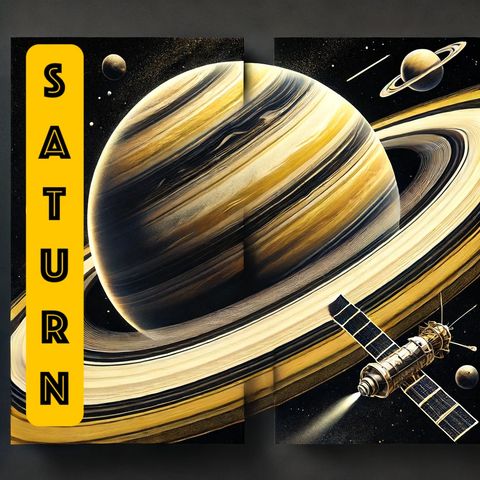Planety Saturn the Celestial Jewel

Descarga y escucha en cualquier lugar
Descarga tus episodios favoritos y disfrútalos, ¡dondequiera que estés! Regístrate o inicia sesión ahora para acceder a la escucha sin conexión.
Planety Saturn the Celestial Jewel
Esta transcripción es generada automáticamente. Ten en cuenta que no se garantiza una precisión absoluta.
Descripción
Saturn is one of the most fascinating planets in our solar system, known for its stunning ring system and numerous moons. Here’s an overview of Saturn’s key features and characteristics:Basic...
mostra más- Size: Saturn is the second-largest planet in the solar system, with a diameter of about 116,460 kilometers (72,366 miles), making it nearly 9.5 times wider than Earth.
- Mass: It has a mass of 5.683 × 10^26 kilograms, which is about 95 times the mass of Earth.
- Orbit and Rotation: Saturn orbits the Sun at an average distance of about 1.429 billion kilometers (888 million miles). It takes approximately 29.5 Earth years to complete one orbit. Saturn has a fast rotation period, with a day lasting only about 10.7 hours.
- Ring System: Saturn’s rings are its most distinctive feature. They are composed of countless small particles, ranging from micrometers to meters in size, made primarily of water ice with traces of rocky material. The rings are divided into several main sections (A, B, C, D, E, F, and G rings) separated by gaps and divisions.
- Atmosphere: Saturn’s atmosphere is mostly hydrogen (about 96%) and helium (about 3%), with small amounts of methane, ammonia, and other trace gases. The atmosphere is characterized by strong winds and large storms, including long-lasting features like the hexagonal storm at the north pole.
- Interior: Saturn has a layered interior structure, with a core of rock and metal, surrounded by a layer of metallic hydrogen and an outer layer of molecular hydrogen.
- Magnetic Field: Saturn has a strong magnetic field, though it is weaker than Jupiter’s. The magnetic field creates auroras at the planet's poles and interacts with the solar wind and its moons.
- Moons: Saturn has at least 82 known moons, with Titan and Enceladus being the most notable.
- Titan: Titan is the second-largest moon in the solar system and has a thick atmosphere rich in nitrogen. It features lakes and rivers of liquid methane and ethane, and has a surface that includes hydrocarbon dunes and icy mountains.
- Enceladus: Enceladus is known for its geysers that shoot water ice and organic molecules into space from a subsurface ocean, indicating potential habitability.
- Space Missions:
- Pioneer 11 was the first spacecraft to fly by Saturn in 1979.
- Voyager 1 and Voyager 2 provided detailed images and data during their flybys in the early 1980s.
- Cassini-Huygens was a joint mission by NASA, ESA, and ASI that orbited Saturn from 2004 to 2017, providing extensive data on the planet, its rings, and its moons. The Huygens probe landed on Titan, offering the first direct observations of its surface.
- Density: Saturn is the least dense planet in the solar system; its average density is less than water. If there were a large enough body of water, Saturn would float.
- Storms: Saturn experiences massive storms, some of which are so large they can be seen from Earth with a telescope. The Great White Spot is a periodic storm that appears roughly every 30 Earth years.
- Seasons: Saturn experiences seasons due to its axial tilt of 26.7 degrees, similar to Earth's. Each season lasts over seven Earth years.
Información
| Autor | QP-4 |
| Organización | William Corbin |
| Página web | - |
| Etiquetas |
Copyright 2024 - Spreaker Inc. an iHeartMedia Company
